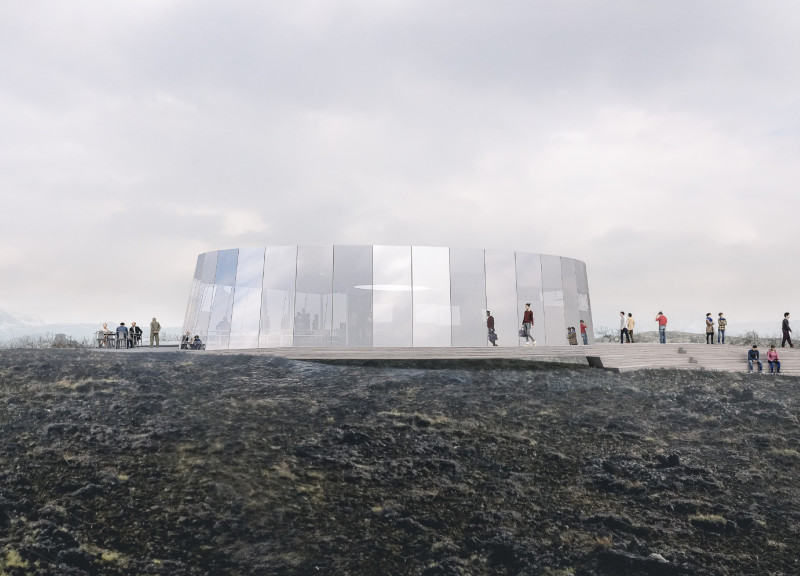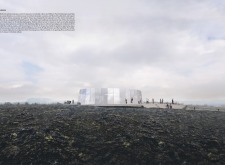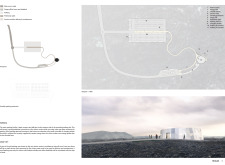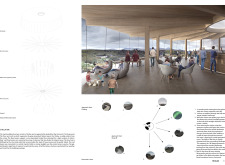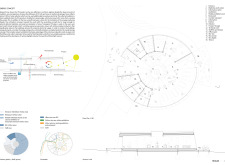5 key facts about this project
The architectural design located in the Dimmuborgir Lava Fields in Iceland, named Hraun, serves as a visitor center that connects visitors to the unique geological features of the area. The design aims to provide educational experiences while respecting the natural landscape. The building's layout is elliptical, which minimizes sharp edges and allows for expansive views of the nearby Hverfjall Volcano and the surrounding lava formations.
Design Concept
Hraun's design emphasizes a strong connection to the environment. The elliptical shape of the building creates a flow that guides visitors as they move through the space. This arrangement encourages exploration and engagement while providing clear lines of sight to the stunning landscapes outside. Inside, exhibition spaces tell the story of the lava fields, highlighting their geological past and cultural importance, allowing visitors to appreciate the natural beauty and history of the region.
Structural Features
The structure of Hraun primarily uses timber, supported by steel pillars. This choice aligns with sustainable practices in architecture. Glue-laminated timber beams create the building's roof and floors, forming patterns that connect back to the center. This design choice provides openness inside the building, enabling a gathering of people while ensuring the structure can handle large numbers of visitors over time.
Energy Efficiency
Energy sustainability is an integral part of the design. Photovoltaic panels are incorporated to capture solar energy effectively, taking advantage of the region's climate. The positioning of these panels considers reflections from snow and cooler temperatures, which improve their energy output. Transparent photovoltaic glass on the east, west, and south sides allows for natural light to enter while also producing energy for the building, reducing its dependence on external power sources.
Visitor Experience
The organization of Hraun prioritizes accessibility and ease for visitors. It includes a compact parking area located on the eastern side, which is close to the entrance. There is also a designated drop-off zone for those with limited mobility, reflecting a thoughtful consideration of diverse visitor needs. Inside, the layout includes curated exhibition areas that engage guests, allowing them to learn about the rich narratives that the Dimmuborgir Lava Fields present.
A central skylight allows natural light to fill the interior, creating a bright and welcoming atmosphere. This design choice enhances the connection between visitors and the landscape outside, offering a sense of openness while immersing them in the beauty of the natural surroundings.


